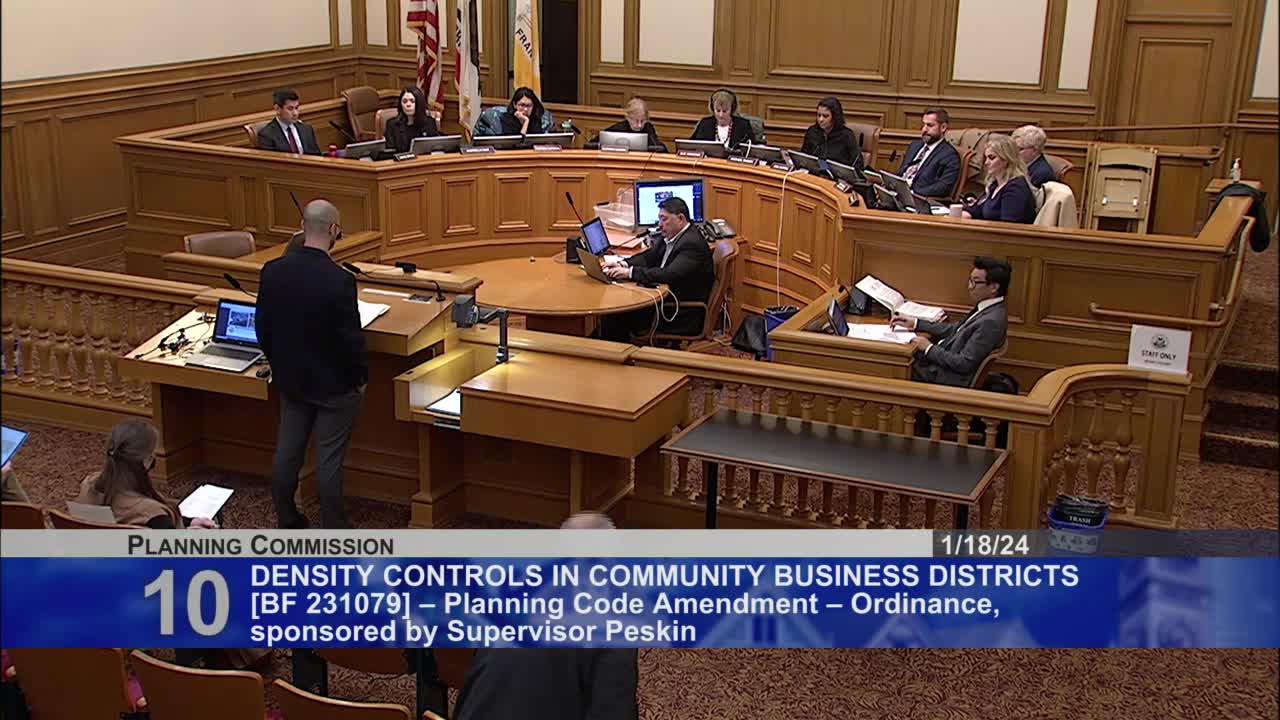San Francisco Board revises adaptive reuse ordinance to protect historic buildings
January 18, 2024 | San Francisco City, San Francisco County, California

This article was created by AI summarizing key points discussed. AI makes mistakes, so for full details and context, please refer to the video of the full meeting. Please report any errors so we can fix them. Report an error »

In a recent meeting, San Francisco officials addressed concerns surrounding the city's adaptive reuse ordinance, which was designed to convert vacant commercial buildings into residential spaces. The ordinance, passed last July, aimed to tackle high vacancy rates in downtown office buildings. However, city leaders have identified unintended consequences that have emerged since its implementation.
One significant issue highlighted was the potential for demolishing historic buildings, such as the 1906 office structure at 1088 Sansom, which is currently occupied by tenants. This building is classified as a historic resource and part of the Northeast Waterfront Historic District. The changes to zoning laws have inadvertently incentivized the demolition of occupied historic properties rather than their reuse, contradicting the ordinance's original intent.
To address these concerns, city officials proposed amendments to the planning code that would reinstate numerical density limits in certain historic districts, specifically the Northeast Waterfront and Jackson Square. This move aims to reduce the incentive for demolishing historic buildings and encourage the preservation of the area's architectural character.
Additionally, the proposed amendments would allow projects utilizing the adaptive reuse program to benefit from form-based density, which is intended to facilitate the conversion of commercial buildings into residential units. Officials believe that easing restrictions will promote more residential development in downtown areas.
The meeting also touched on potential conflicts with state housing requirements, particularly concerning parcels near Fisherman's Wharf. The recommended modifications would ensure that form-based density remains applicable in these areas, thus avoiding complications related to state housing laws.
As San Francisco continues to navigate the challenges of urban development and historic preservation, these proposed changes reflect a commitment to balancing the need for housing with the preservation of the city's rich architectural heritage. The next steps will involve further discussions and potential approvals to refine the adaptive reuse ordinance and its impact on the community.
One significant issue highlighted was the potential for demolishing historic buildings, such as the 1906 office structure at 1088 Sansom, which is currently occupied by tenants. This building is classified as a historic resource and part of the Northeast Waterfront Historic District. The changes to zoning laws have inadvertently incentivized the demolition of occupied historic properties rather than their reuse, contradicting the ordinance's original intent.
To address these concerns, city officials proposed amendments to the planning code that would reinstate numerical density limits in certain historic districts, specifically the Northeast Waterfront and Jackson Square. This move aims to reduce the incentive for demolishing historic buildings and encourage the preservation of the area's architectural character.
Additionally, the proposed amendments would allow projects utilizing the adaptive reuse program to benefit from form-based density, which is intended to facilitate the conversion of commercial buildings into residential units. Officials believe that easing restrictions will promote more residential development in downtown areas.
The meeting also touched on potential conflicts with state housing requirements, particularly concerning parcels near Fisherman's Wharf. The recommended modifications would ensure that form-based density remains applicable in these areas, thus avoiding complications related to state housing laws.
As San Francisco continues to navigate the challenges of urban development and historic preservation, these proposed changes reflect a commitment to balancing the need for housing with the preservation of the city's rich architectural heritage. The next steps will involve further discussions and potential approvals to refine the adaptive reuse ordinance and its impact on the community.
View full meeting
This article is based on a recent meeting—watch the full video and explore the complete transcript for deeper insights into the discussion.
View full meeting
